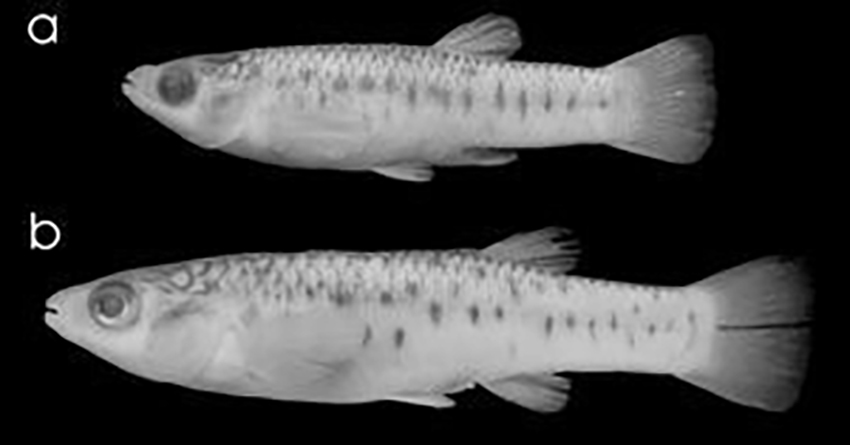new species:
Jenynsia tucumana Aguilera & Mirande, 2005
type locality:
Argentina, province of Tucumán, Dpto. Trancas, río Vípos (26°28’ S; 65°20’ W), 5 km from Ruta Nacional 9; Holotype CI-FML 3828 (male, 30.7 mm SL)
distribution in Argentina:
– type locality: Paratypes CI-FML 3829 (4), AI 163 (6), ANSP 180781 (6), CI-FML 3840 (2 c&s)
– non type material from other localities of upper Río Salí basin in province of Tucumán: Tafí Viejo, El Siambón, Río Grande / Dpto. Burruyacu, Río Medina / Dpto. Burruyacu, El Sunchal, Río Calera-Ayo / Dpto. Burruyacu, Río Los Chorrillos / Dpto. Trancas, Río Tapia / Dpto. Burruyacu, Río Las Salas
– non type material from upper Río Salí basin in province of Salta: Dpto. Candelaria, Río La Candelaria
published in:
Aguilera, G. & J.M. Mirande (2005):
A new species of Jenynsia (Cyprinodontiformes: Anablepidae) from northwestern Argentina and its phylogenetic relationships.
Zootaxa 1096: 29–39 (2005)
abstract (from publication):
Jenynsia tucumana new species is described from the upper Río Salí basin, province of Tucumán, northwestern Argentina. The new species is diagnosed by the possession of a row of dark markings ranging from dots to small vertical stripes from the tip of adpressed pectoral fin to the posterior margin of the hypural. Also, the new species has a mandibular canal pore W and a symmetrical fifth anal-fin ray in adult males; whereas the females lack a urogenital swelling. According to a phylogenetic reanalysis of the genus, the new species is sister to most species of the subgenus Jenynsia, except for J. onca and possibly J. sanctaecatarinae.
distribution (from publication):
Jenynsia tucumana n.sp. is known from Río Vípos, Río Calera, and Río Grande; all of which are in the upper Río Sali basin.

